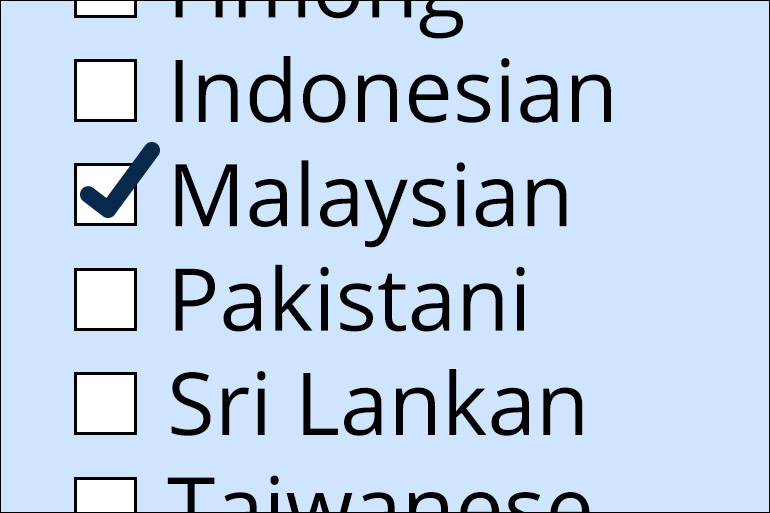For years, California has used a limited number of categories to map out health trends among Asian ethnic groups. People of Taiwanese descent may have been folded into the Chinese demographic group in identifying death, disease and pregnancy rates. Fijian people were lumped into the category of “other Asian.”
But thanks to a new law, the California Department of Public Health will add categories so that people of many more ancestries, such as Bangladeshi or Hmong, can self-report their ethnic group more specifically and accurately. The categories do not factor in immigration status, and involve descendants of Asian immigrants as well as new arrivals to the country.
The new law was signed in September by Gov. Jerry Brown after a 10-year effort by health advocates.
“We’re extremely excited,” said Kimberly Chen, government affairs manager for the California Pan-Ethnic Health Network, a sponsor of the bill. “In the past, we’ve seen how [such specificity] has been really helpful in driving policy changes.”
California’s public health officials already collect demographic data on various Asian groups when tracking genetic and communicable diseases, the incidence of childhood lead poisoning, and when people are born and pass away.
Data on Chinese, Japanese, Filipino, Korean, Vietnamese, Asian Indian, Laotian, Cambodian, Hawaiian, Guamanian and Samoan people are already in the state public health system.
But soon, officials will add 10 new categories involving a population of about a half a million people, according to the measure’s proponents. New data will specify whether someone is Bangladeshi, Hmong, Indonesian, Malaysian, Pakistani, Sri Lankan, Taiwanese or Thai, or if they are from the Pacific Islands of Fiji or Tonga.
Proponents of the new law said that continuing to lump many Asian groups into one “other Asian” category limits the state’s ability to provide the best health care to this population and could lead to greater health care costs. Chen of CPEHN says the perception that “Asian women don’t get breast cancer” was broken a few decades ago when data was parsed out more finely about various Asian communities. Researchers saw, for example, that Native Hawaiian women had much higher rates of breast cancer than Korean women. “With that information, they were able to drive more research, and outreach and funding to really address that disparity,” Chen said.
More specific demographic information could identify mental health and post-traumatic stress disorders in Asian refugee communities, Chen said. The data also could be used to assess teen pregnancy rates among different ethnic communities and inform policy and programs for communities most vulnerable to commercial sexual exploitation and childhood lead exposure.
Better data also could help advocates understand how Hmong and Cambodian communities, which have high rates of diabetes, each are benefiting from prevention programs, Chen said.
Some Chinese American groups had been opposed the measure, and one Bay Area group, the Silicon Valley Chinese Association (SVCA), protested it at the State Capitol in August. The measure’s opponents said the bill was unfair because it targeted Asians and not other demographic groups. In a letter to the bill’s author, Assemblymember Rob Bonta (D-Oakland), SVCA said government has used ethnic data to discriminate against immigrants in the past. It cited as examples the Chinese American Exclusion Act of 1882 and the relocation of Japanese Americans during World War II.
“There is no guarantee that data collected by this bill won’t be used to discriminate against the very people it is intended to protect,” reads the letter from Weiping Li, the association’s president.
Supporters of the new law say they advocated to make sure no identifiable data is released that could lead to discrimination. Indeed, the law states that the Department of Public Health shall make the data available to the public but may not disclose any “personal identifying information.”
This story was produced by Kaiser Health News, which publishes California Healthline, an editorially independent service of the California Health Care Foundation.







